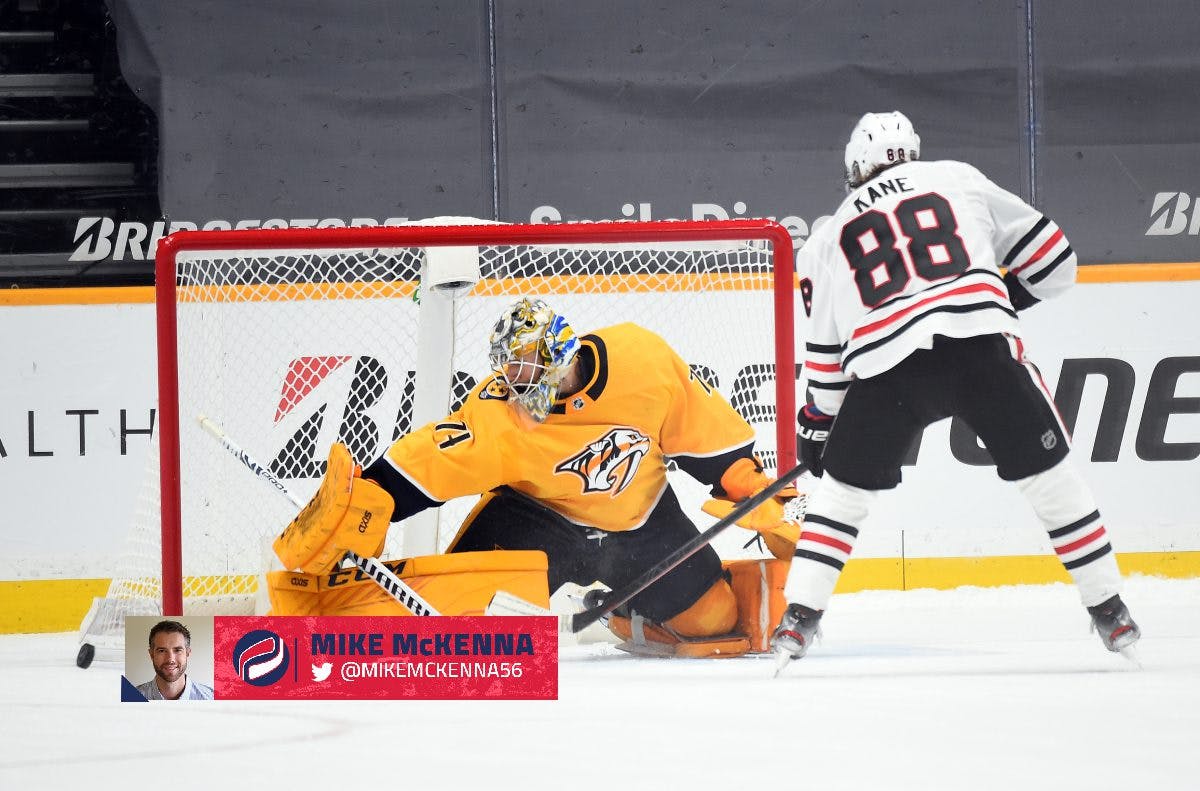Want to scrap shootouts forever? Try pond hockey rules in overtime

I don’t know about you, but I’m tired of seeing NHL games end in shootouts. And I think there’s a simple solution.
Remove the lines in overtime. Make it pond hockey. No icing. No offsides. Just 3-on-3 hockey on a wide open slab of ice.
Teams have figured out 3-on-3 overtime. Puck management has become key. Players will routinely hang onto the puck and double back into the neutral zone if a scoring chance doesn’t arise.
There’s a premium on line-rushes rather than in-zone time. And since line rushes typically start in the defensive or neutral zone, it takes time for them to develop. Players have developed patience. They’re willing to wait for a good opportunity rather than force it.
While there are still occasions when the game breaks open and teams trade scoring chances at a breakneck pace, it’s happening less and less often. And to me, it means that overtime has become somewhat mundane compared to the early years of 3-on-3.
Five minutes of overtime doesn’t seem like enough. And I think the overwhelming majority of players, coaches, and fans alike would prefer to see games end on the ice with a hockey play, not a skills competition like the shootout.
My solution isn’t revolutionary by any stretch. I’d actually be surprised if someone hasn’t brought it up among NHL general managers. But I think it’s worth testing.
There’s precedent for introducing this type of rule change. The American Hockey League has long been an incubator for ideas.
Hybrid icing is a great example. During the 2012-13 NHL lockout, the AHL implemented the rule as a way to mitigate risk of injury. It proved successful, and the NHL followed suit by adopting hybrid icing for the 2013-14 season. The positive feedback from the minors was enough to convince the NHL that it was the right thing to do.
It’s worth noting that the AHL operates independently. But the NHL curries a huge amount of favor. Basically; whatever the NHL wants, the NHL gets when it comes to the AHL’s on-ice product.
But give the AHL credit: the list of rules first implemented by the league and then adopted by the NHL is a very long one. And only some were tested at the request of the NHL. The AHL was the first to introduce 4-on-4 and 3-on-3 overtime. The shootout. The puck over glass rule that results in a minor penalty for delay of game. Moving the faceoff to the attacking zone on power play. No line change after icing. Mandatory facial protection. The goaltender trapezoid. And more.
So why not spend a year or two seeing what happens if the lines are removed for overtime? I can’t see any downside. Let the AHL lead the experiment. The league has experience with innovation and has repeatedly shown the ability to adapt quickly.
I know there are purists who would hate the idea. They’d claim that taking away the lines would desecrate the sacred game of hockey. It would be a gimmick.
Well, guess what? Get with the times. The NHL is already playing 3-on-3 hockey in overtime, with a shootout to follow. Tradition went out the window long ago.
I stand by my previous argument that most would prefer to see the game end with live play. And I think that by removing the blue, red, and goal lines, teams would come up with creative strategies.
Imagine if a team could station a player at the far end of the ice, waiting to receive a long stretch pass from a teammate in the defensive zone. As a former goaltender, I can’t tell you how nervous that would make me. The player would have so much time with the puck directly in front of the net.
Now, the play I just described doesn’t come without risk. Teams would essentially be playing shorthanded, 2-v-3 in the defensive zone. And that’s a big gamble.
But I think by taking the lines out, it would spread the players out across the ice surface. And realistically, even at 3-on-3 in the offensive zone, the ice gets crowded towards the front of the net.
We need to let NHL players show their skill. And the best way to do that is by creating time and space. The ice is 200 feet long by 85 feet wide. Yet it’s divided into zones that inherently corral the players. Why stymie offensive prowess purely due to tradition?
There’s been talk of adding minutes to overtime. I don’t like that from the players’ perspective. Injuries are a real concern when minutes increase. And I suspect the extra frame would become more drawn out as teams waited for the perfect opportunity to gain entry into the offensive zone with speed.
Take the linesman off the ice after 60 minutes but leave the referees out there. Penalties will still happen and they need to be called. But I truly believe a hands-off approach to overtime would be incredibly exciting.
Pond hockey is the answer. Drop the puck and let ‘em play.

Recently by Mike McKenna
More from Mike McKenna
- Ranking every NHL goalie tandem for 2023-24
- Staring down Lou: How standing up for yourself can change a player’s career
- Why it’s time to embrace ‘gambles’ like the Jake Sanderson contract
- Why we shouldn’t view Sheldon Keefe’s contract extension as a vote of confidence
- ‘Two Sean O’Connors?’ NHL training camps bring the funny – and the weird